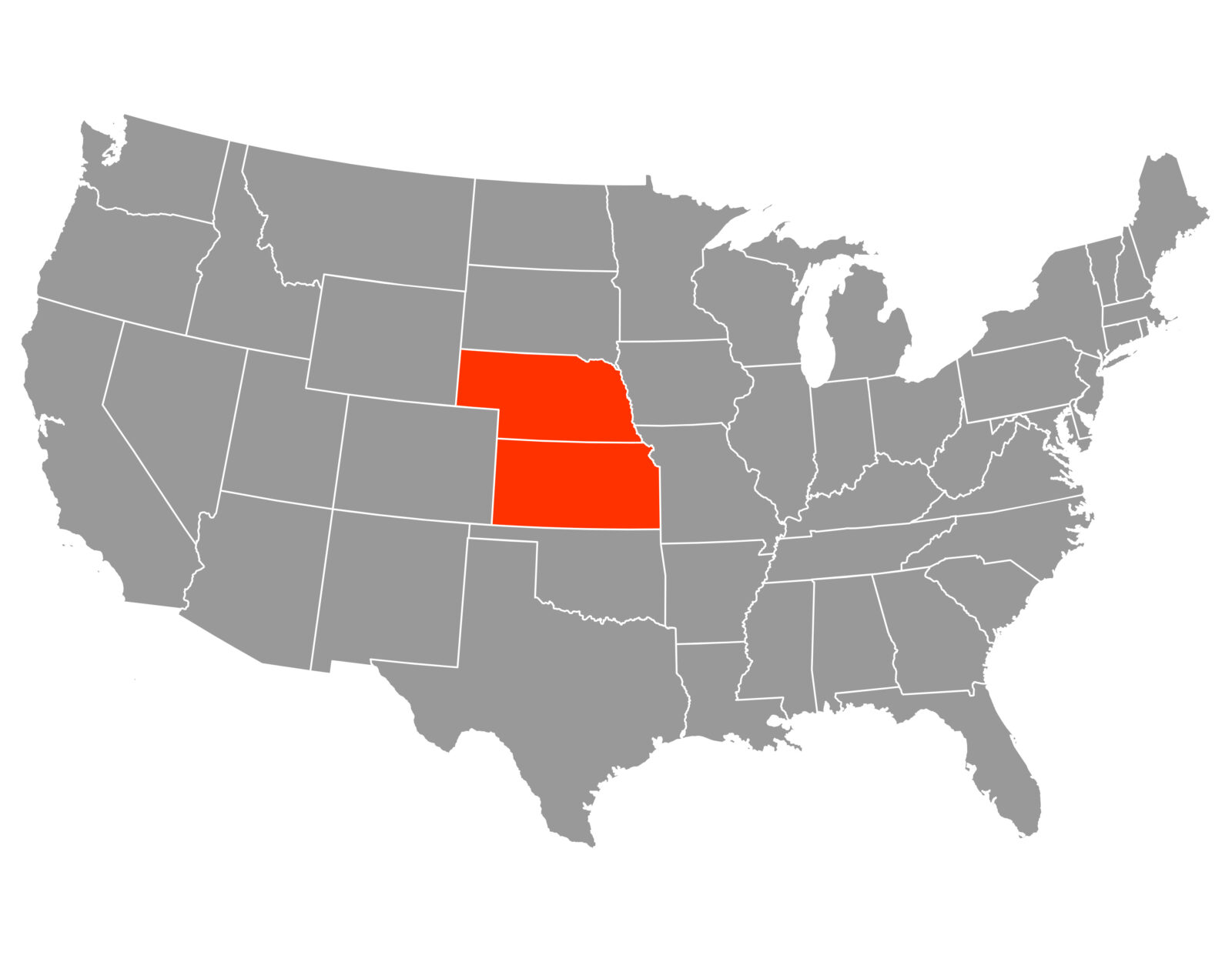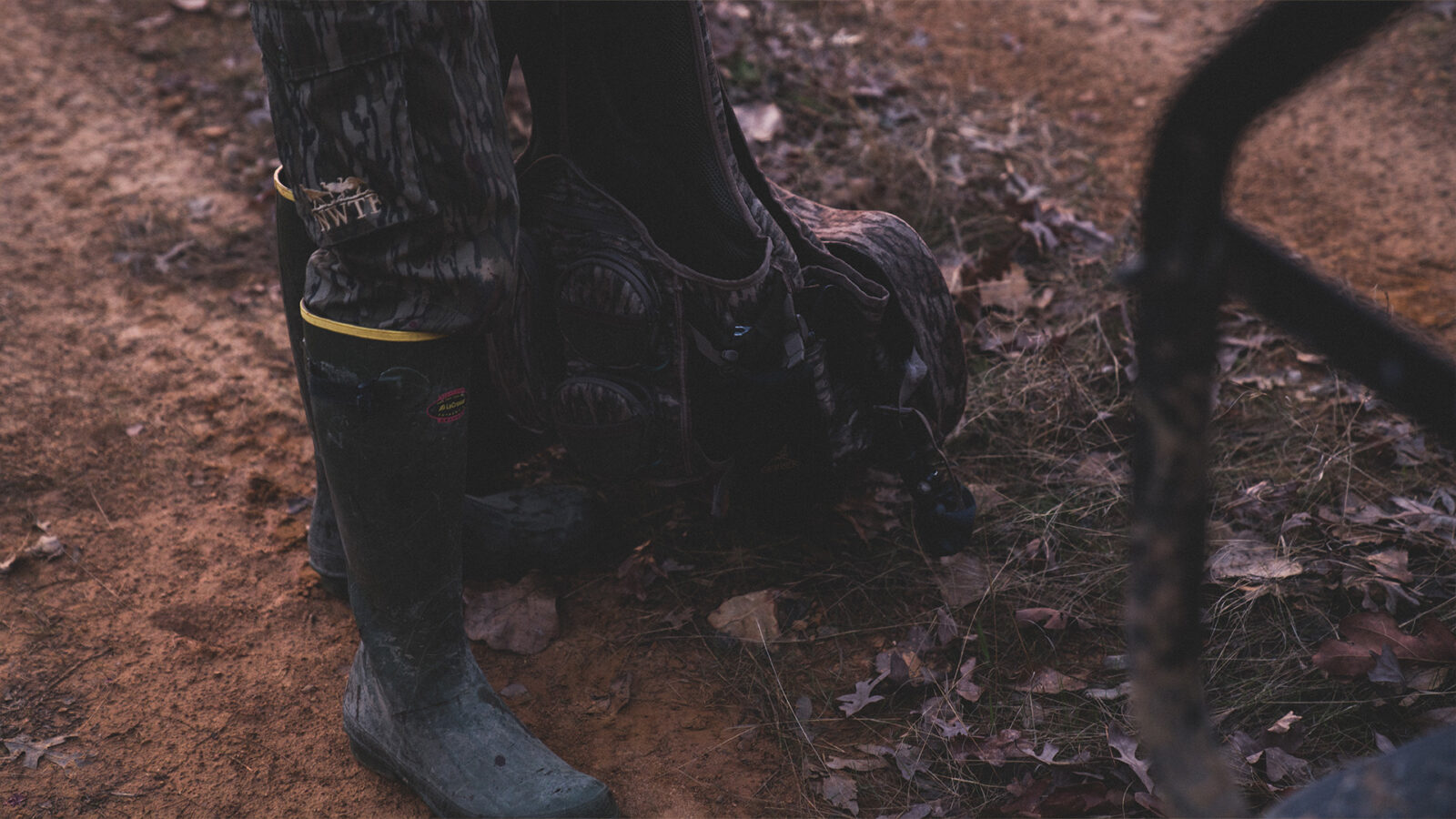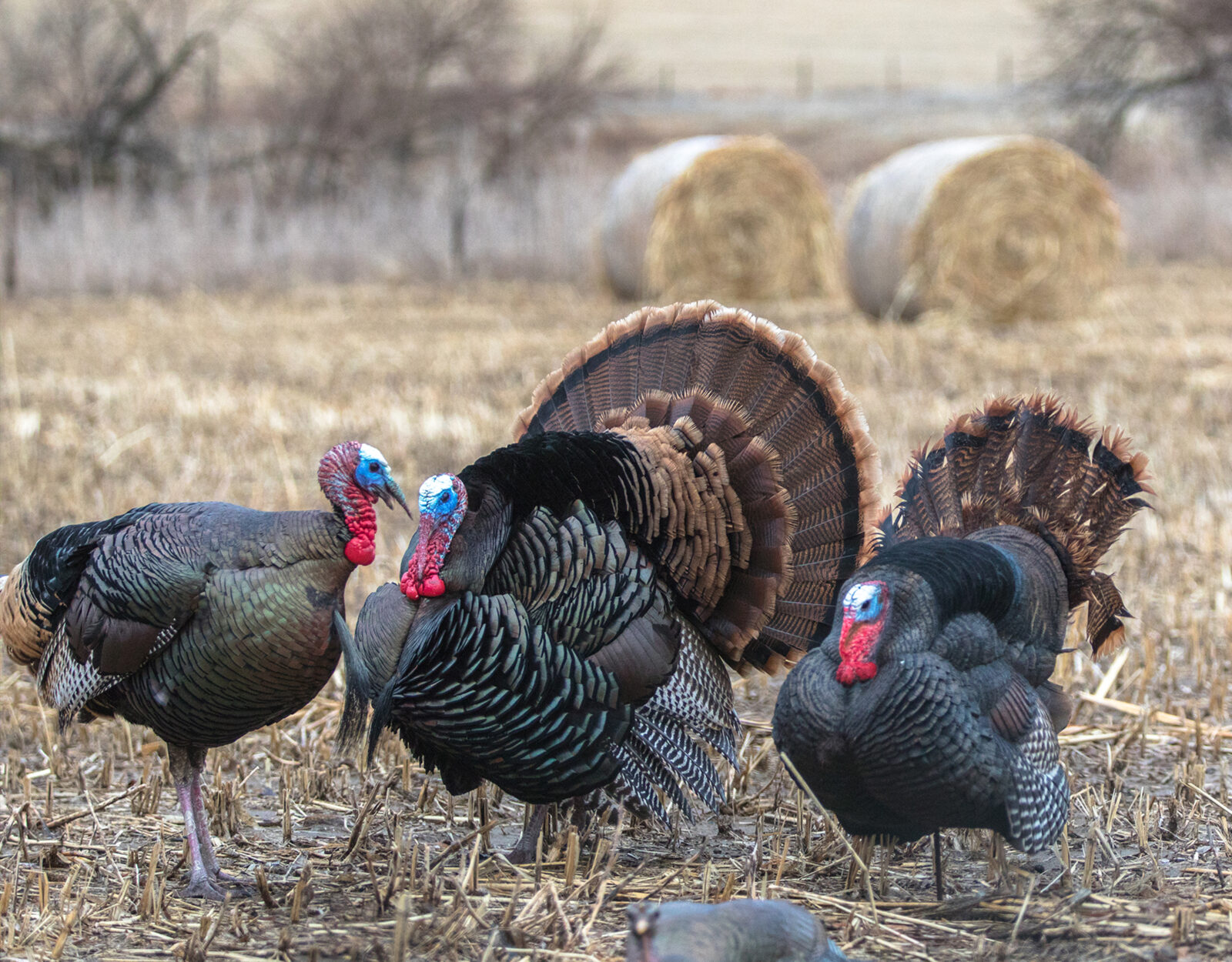Hybrid wild turkeys are an anomaly. They are not part of the “Turkey Grand Slam,” and arguably they make it harder for turkey hunters to achieve a pure Grand Slam. It’s a fact that turkeys roam and move about counties, states, and regions, so interbreeding will and does occur. Hybrid turkeys occur when two other subspecies (ie. eastern, Merriam’s, Rio Grande, etc.) interbreed. You’ll find more hybrids where the home ranges of different subspecies overlap. We note a couple of states where hybridization has happened enough to create huntable populations of the hybrid subspecies. Regardless if they’ll help or hurt your prospects for a Slam, hybrids are still fun to hunt come springtime.

Kansas
Early Season and Multiple Subspecies
Kansas could be argued as the premiere state to hunt a Rio Grande or hybrid subspecies. A few short years ago bird numbers across the state were stellar and there was a two-bird limit statewide. As of 2023 and through 2024, bird numbers and harvests have been on the decline, and like in so many other states it is likely a culmination of factors, including drought, increased hunting pressure, and habitat loss, among other factors. That said, Kansas still offers some fantastic spring hunting. With reasonable amounts of public land and one of the country’s oldest walk-in hunting programs, access is solid in most areas of the state and if you put in the work private land access is certainly achievable.
Being centrally located, non-resident hunting pressure is certainly a factor when planning your hunt. Look to areas with limited accommodations, yet within a reasonable distance of numerous chunks of hunt-able ground to find your best chance at being the only rig in a parking spot. With more river and stream miles than many realize, vast agriculture, and many native grasslands still intact, turkey habitat is abundant so finding quality ground should be attainable.
Local Intel: Heartland Bowhunter’s Shawn Luchtel
“As for Kansas, it is always fun kicking off the archery season in early April. With the season opening earlier than most, it can be hit or miss depending on the weather. With the right weather, the birds seem to break up and are very responsive to calls. Whether it’s easterns on the east side of the state, a hybrid towards central Kansas, or the Rios of western Kansas I have enjoyed the diversity of subspecies that Kansas has to offer. The numbers have certainly been on a decline but the state has taken action to reduce the number of tags and ensure a healthy population in the future.”
Take a closer look at Kansas:
KS Regs

25% Off Grange Boots
Lightweight, dry, and all-day comfort is what the Lacrosse Grange is all about. Get them at 25% off as an onX Elite Member.
Nebraska
Get There, It’s Worth It
Nebraska has long been known in the turkey community as one of the best “travel to hunt” states in the country and for good reason. As an archery hunter, Nebraska has a multiple-week archery-only season that kicks off in late March. Birds are still in large groups, which can be great when you are on them, but very frustrating if they happen to be on the other side of the fence as calling is often fruitless when talking to groups of 20-50 birds, or more. As spring really arrives, so does shotgun season in mid-April. With reasonable amounts of public land, a great walk-in hunting program, relatively cheap tags (right near $120), and Nebraska’s centralized location in the country, it is a great place to take a turkey trip.
Local Intel: The Hunting Public’s Greg Clements
“Nebraska offers a unique turkey hunting experience with the potential to harvest four subspecies all in one state. You’ll find easterns along the eastern border, Rios along the southcentral to southwest border, Merriam’s in the northwest region, and hybrids everywhere in between.
“The best places to find turkeys are along riparian corridors throughout the state and in the Pine Ridge forest in the west. Nebraska’s turkey population exploded in the early 2000s and peaked around 2010. Like many other states though, Nebraska has experienced a significant turkey population decline in the past few years. As a result, there are several brand new changes to the turkey hunting regulations.
“Hunters now may only purchase two spring permits instead of three, and can only harvest one bird per day. Also, there is a quota of 10,000 spring permits for non-resident hunters as opposed to an unlimited quantity in the past.
“There is around one million acres of public land in Nebraska, most of which is the western half of the state. You can expect a fair amount of hunting pressure on public lands, especially in the Pine Ridge region, as many hunters come to Nebraska to chase Merriam’s. However, if you find public lands are overcrowded gaining access to private land is an attainable goal. Many landowners are willing to let hunters pursue turkeys (more so than deer), especially if you are asking to hunt for just a short period of time. The shotgun season opens around April 15 each year and runs until the end of May. In mid-April, birds can still be grouped up and gobblers are less responsive, especially if it’s unseasonably cool. But if you can time your trip during a week of warmer weather, the action can be dynamite. The most popular time for non-resident hunters, it seems, is in early May. So if you want to avoid the crowds you may consider an earlier hunt (hopefully with moderate weather) or a late season hunt after most people have hung up their vests. We’ve experienced excellent action in the last two weeks of May as well. Good luck!”

Local Intel: Identical Draw’s Nate Krick
“I’ve chased gobbling turkeys in Nebraska for as long as I can remember. Nebraska catches a lot of turkey hunting interest from residents and nonresidents. Unfortunately, most of the state has seen a decrease in turkey populations over the past few years from predation, habitat loss, or over-hunting. There are many possibilities, but I tend to believe in a little bit of each of those things. A couple of new regulations are coming to the table in 2023 that folks should be aware of. Residents and nonresidents can purchase a maximum of two spring turkey tags (down from three), and those tags cannot be filled on the same day.
“Enough with the regulations, let’s get to the fun stuff. When should you plan to hunt Nebraska? Nebraska has a long spring turkey season. Archery-only season opens in late March, and although the birds may be flocked up, not very ‘call-able,’ and there could very well be five inches of snow, it gives hunters a chance to scratch the itch. Another thing to consider is you will not have heavily pressured hunting compared to shotgun season. If you can catch a warm stretch in late March, I have found some incredibly fired-up gobblers. My favorite time to hunt Nebraska is the last week of April and the first week of May. If the weather is warm and dry, the turkeys will be fired up. Do be mindful, shotgun season is open and a lot of public land I have hunted is overrun during a lot of that time frame. Hunt during the week if possible. If hunting pressure is heavy, I like to hunt on rainy days when many minimum maintenance roads aren’t drivable and most hunters are inside taking a nap. I killed a bird on Nebraska public last year during a miserably rainy day. I had to walk for about a mile on a washed-out, minimally-maintained road, but once I got back there I knew I was alone and that ol’ tom turkey was out in the cut corn strutting away with his lady friends.
“Where should you plan to hunt? Nebraska is a super diverse state as far as places you can hunt turkeys. You can find birds in the heavily timbered rolling hills of the eastern side of the state, river bottom, and farm ground turkeys throughout the central part of the state, and as you head further west you can get into almost mountainous habitat with large rolling hills and pine country. There are larger tracts of public land in the western half of the state, whereas the central/eastern part of the state contains smaller, spread-out public chunks. If you do not have private hunting land in the state, do not overlook small chunks of public land or calling landowners for permission. I use onX Hunt all the time to look up landowner information or find a door to knock on.”
Take a closer look at Nebraska:
NE Regs
